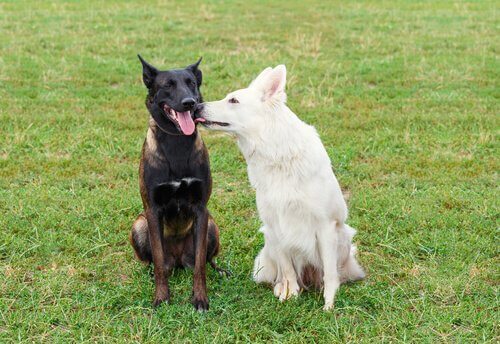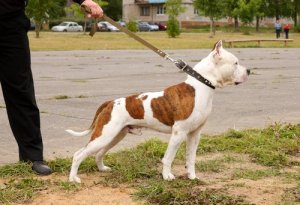10 Tips for Dealing with Excessively Sexual Behavior in Dogs

We all know the effect that a female dog in heat produces in male dogs! In this article, we’ll ask whether there’s any way to control sexual behavior in dogs.
1. Spaying and neutering
This is one of the most common solutions. The dog’s testicles, where testosterone is produced, are removed.
Despite this, male dogs will still be attracted to females and the smell of female dogs in heat. Neutered males will have much less sexual vigor, though, and won’t be able to get female dogs pregnant.
You should neuter your dog ideally before his first birthday, to ensure your dog hasn’t had contact with female dogs and to be able to control him more easily.
2. Using the leash

Dogs must be on a leash in parks and only in very specific situations can you have them off leash. With the leash, you’ll avoid your dog running after female dogs. If your dog is off the leash and the attraction is very strong, then he won’t obey your orders.
3. Training to avoid excessive sexual behavior
The dog must be trained to behave well. Good training with certain commands is very important. For example: up, stop, sit down, go, come. Although these commands don’t guarantee 100% control of the dog when there is a female in heat nearby, they certainly should help.
4. Each dog has unique preferences
Female pheromones drive male dogs wild. Based on those pheromones, male dogs, like other mammals, choose which female they want to mate with.
5. Avoid female dogs in heat
Try to avoid female dogs in heat in the parks or in your neighborhood, if possible. Going to other parks or changing your walking routine to avoid female dogs in heat is a good way to keep your dog under control.
6. Adolescent dogs
Be prepared when your dog is reaching adolescence whether they’re a male or a female, because either way can be problematic. Most unwanted pregnancies in dogs occur during adolescence so carefully watch your dog’s behavior during this period.
7. Training them not to hump
Most male dogs try to “hump” their owner’s arm or another part of the body. At that moment, you have to correct your dog. You could shout “no” to make him understand his behavior is unacceptable.
8. Physical exercise

If your dog is young and needs lots of stimulation, you have to make sure he gets a lot of exercise. In general, this daily routine will moderate sexual behavior in dogs.
9. Spray them with water
When puppies are growing up, they often try to hump certain objects such as cushions, pillows, teddy bears, etc. When this happens, you must say to your dog “out”, and immediately spray him with water using a water gun or a spray bottle. This will make him stop. Then, after a while, you can play with him or take him out for a walk.
10. Medications
Don’t try medication to alter sexual behavior in dogs, because it’s not beneficial for their health. If the problem is getting worse, you should visit the vet.
All cited sources were thoroughly reviewed by our team to ensure their quality, reliability, currency, and validity. The bibliography of this article was considered reliable and of academic or scientific accuracy.
- International Association of Animal Behavior Consultants. (2019). Manual de entrenamiento canino. IAABC. Recuperado el 18 de abril de 2022, disponible en: https://m.iaabc.org/docs/espanol/IAABCManual_digitalv120919.pdf
- Gallup Jr, G. G., & Frederick, D. A. (2010). The science of sex appeal: An evolutionary perspective. Review of General Psychology, 14(3), 240-250.
- Beach, F. A. (1970). Hormonal effects on socio-sexual behavior in dogs. Mammalian reproduction, 437-466.
- Hart, B. L. (1968). Role of prior experience in the effects of castration on sexual behavior of male dogs. Journal of Comparative and Physiological Psychology, 66(3p1), 719.
- Houpt, K. A. (1997). Sexual behavior problems in dogs and cats. Veterinary Clinics of North America: Small Animal Practice, 27(3), 601-615.
